The fascinating field of iridológia offers a unique perspective on health assessment through careful examination of the iris. With the right tools and knowledge, practitioners can observe intricate iris patterns that may reveal valuable insights about a person’s health predispositions. This comprehensive guide explores how to effectively use an iriscope—a specialized tool designed for iridológia analysis—and understand the principles behind this alternative health practice.
Iridológia is the study of the iris patterns, colors, and other characteristics as they relate to reflecting a person’s systemic health. Practitioners of iridológia believe that the iris, the colored part of the eye, contains detailed information about the body’s past, present, and potential future health conditions. This practice is based on the concept that each organ and body system has a corresponding reflex point in the iris.
The origins of modern iridológia are often attributed to Dr. Ignaz von Peczely, a Hungarian physician who, in the 1860s, noticed changes in the iris of an owl after it suffered a broken leg. This observation led him to develop the first iris chart mapping various regions of the iris to different parts of the human body. Later, Nils Liljequist from Sweden and Bernard Jensen from the United States further developed and popularized iridológia techniques and charts.
Ako Iridológia Complements Holistic Health Practices
Iridológia is often integrated with other holistic health approaches as a non-invasive assessment tool. While conventional medicine may not widely recognize iridológia, many alternative health practitioners value it as one component of a comprehensive health evaluation. The practice focuses on identifying potential areas of weakness or congestion in the body rather than diagnosing specific diseases.
It’s important to note that iridológia is considered a complementary approach and should not replace conventional medical diagnosis and treatment. Instead, it may provide additional insights that can guide preventive health measures and lifestyle adjustments.
Understanding the Iriscope: Essential Equipment for Iridológia
An iriscope is a specialized device designed for examining the iris in detail. Modern iriscopes combine high-resolution magnification with digital imaging capabilities, allowing practitioners to capture, store, and analyze iris images with precision.
Basic Components
- High-resolution camera
- Magnification system
- Specialized lighting
- Image capture software
- Adjustable positioning system
Types of Iriscopes
- Basic handheld models
- Digital iriscopes with software
- Professional clinical systems
- Smartphone adapters
- USB-connected devices
Kľúčové funkcie
- 10-40x magnification
- LED illumination
- Image storage capability
- Analysis software integration
- Adjustable focus
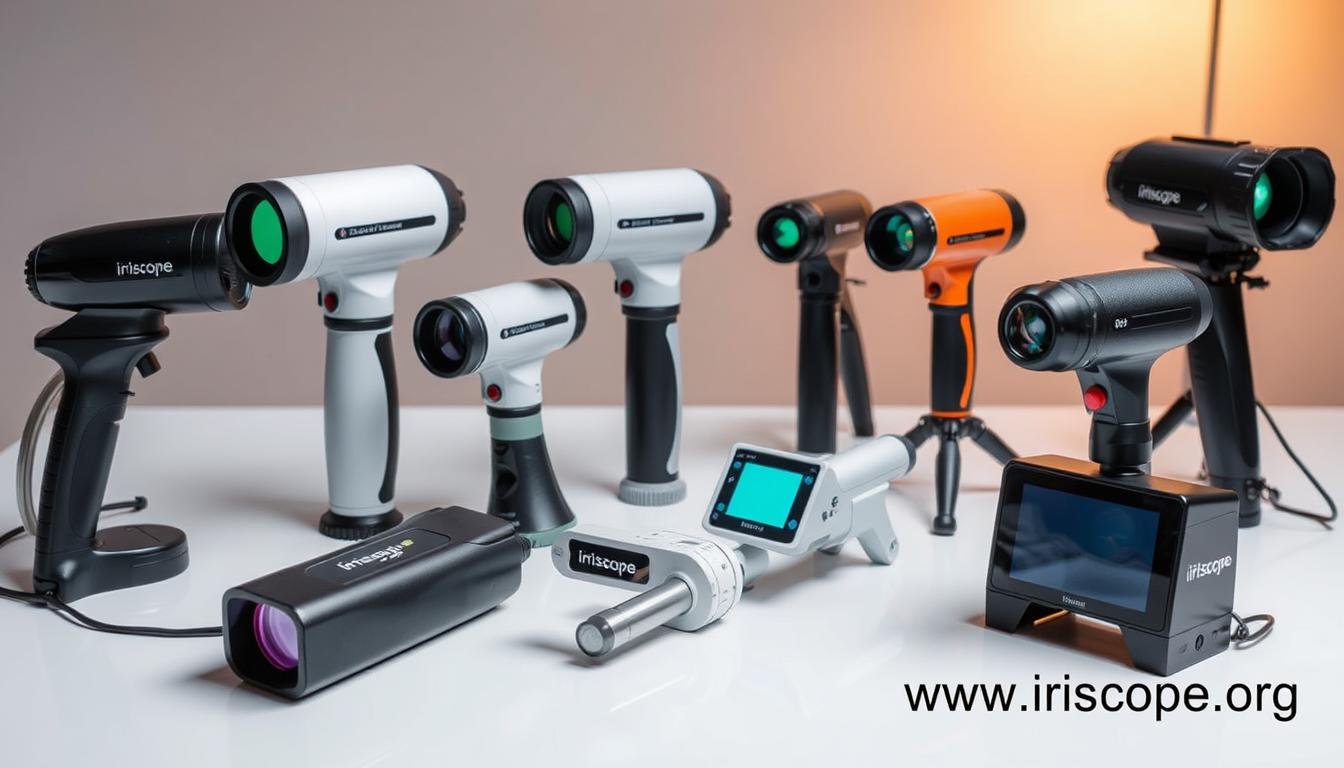
Professional Iriscopes for Your Practice
We offer a complete range of high-quality iriscopes, from entry-level models to advanced professional systems with integrated software. All our equipment is manufactured to precise specifications and comes with comprehensive technical support.
Explore Our Iriscope Collection
Preparing for an Iridológia Examination
Preparing the Environment
Creating the right environment is crucial for accurate iridológia analysis. The examination room should have controlled lighting to prevent glare and reflections that might interfere with iris observation. Ambient light should be dim but comfortable, with the primary illumination coming from the iriscope itself.
Position the equipment on a stable surface at a comfortable height for both practitioner and client. Ensure there is adequate space for proper positioning and adjustment during the examination. The room should be quiet and private to help the client remain relaxed throughout the procedure.
Preparing the Client
Before beginning an iridológia session, it’s important to properly prepare the client. Explain the procedure in detail, addressing any questions or concerns they might have. Inform them that the examination is non-invasive and painless, requiring only that they keep their eyes open and steady during image capture.
Advise clients to avoid wearing contact lenses during the examination if possible. If they normally wear contacts, ask them to remove them at least 30 minutes before the session to allow the eye to return to its natural state. Additionally, suggest they avoid eye drops or medications that might alter pupil size or iris appearance unless medically necessary.
“Proper preparation creates the foundation for accurate iridológia analysis. Taking time to set up your environment and prepare your client will significantly improve the quality of your examination results.”
– Experienced Iridology Practitioner
Equipment Setup Checklist
- Clean the iriscope lens and camera with appropriate solutions
- Check all connections and power sources
- Calibrate the lighting system
- Test the image capture functionality
- Prepare your iridológia charts and reference materials
Step-by-Step Guide to Iridológia Examination
Conducting a thorough iridológia examination requires a systematic approach and attention to detail. Follow these steps to ensure consistent and reliable results with your iriscope.
1. Client Positioning

Seat the client comfortably with their chin resting on the chin rest if your iriscope has one. Adjust the height so their eyes are level with the camera. Instruct them to look straight ahead and try to keep their eyes open without straining.
2. Lighting Adjustment
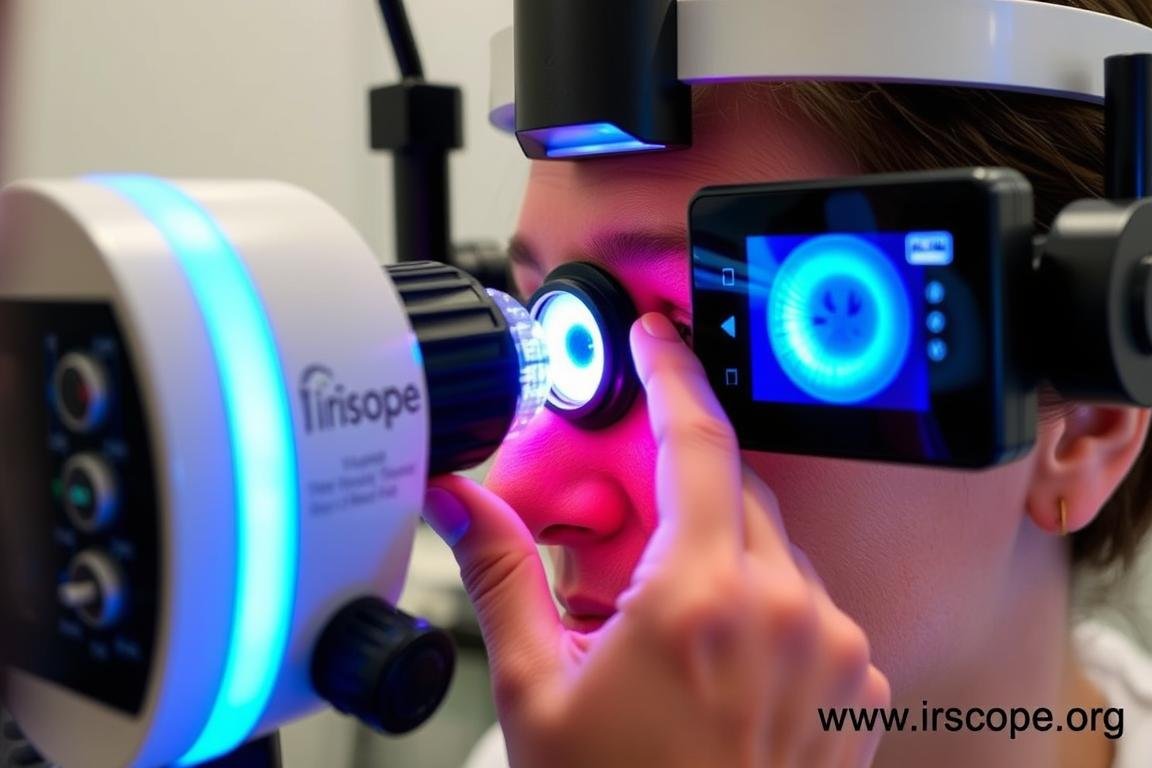
Adjust the iriscope’s lighting to provide even illumination across the iris. The light should be bright enough to reveal details but not so intense that it causes the pupil to constrict excessively or creates discomfort for the client.
3. Focus and Magnification

Adjust the focus until the iris patterns are sharp and clear. Begin with a lower magnification to capture the entire iris, then increase magnification to examine specific areas of interest in greater detail.
4. Image Capture
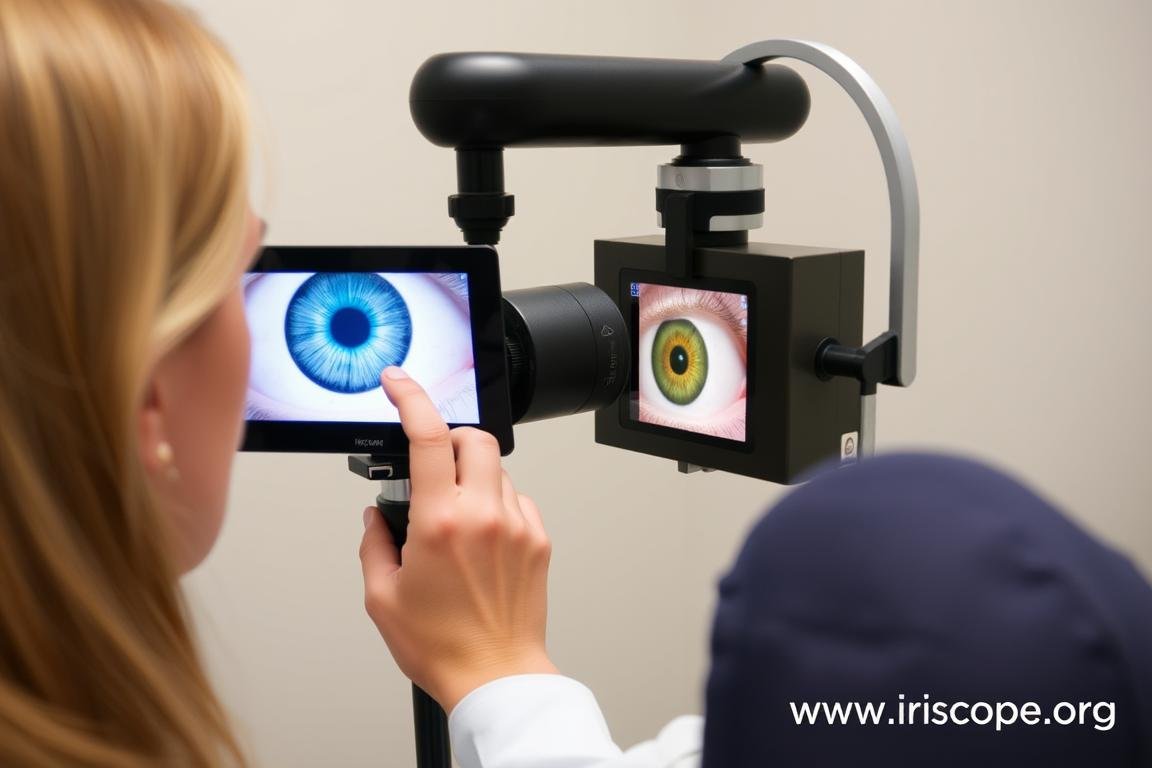
Once the iris is properly positioned and focused, capture several images of each eye. Take photos from slightly different angles if necessary to document all areas of interest. Ensure the images are clear and properly illuminated before proceeding.
5. Systematic Observation
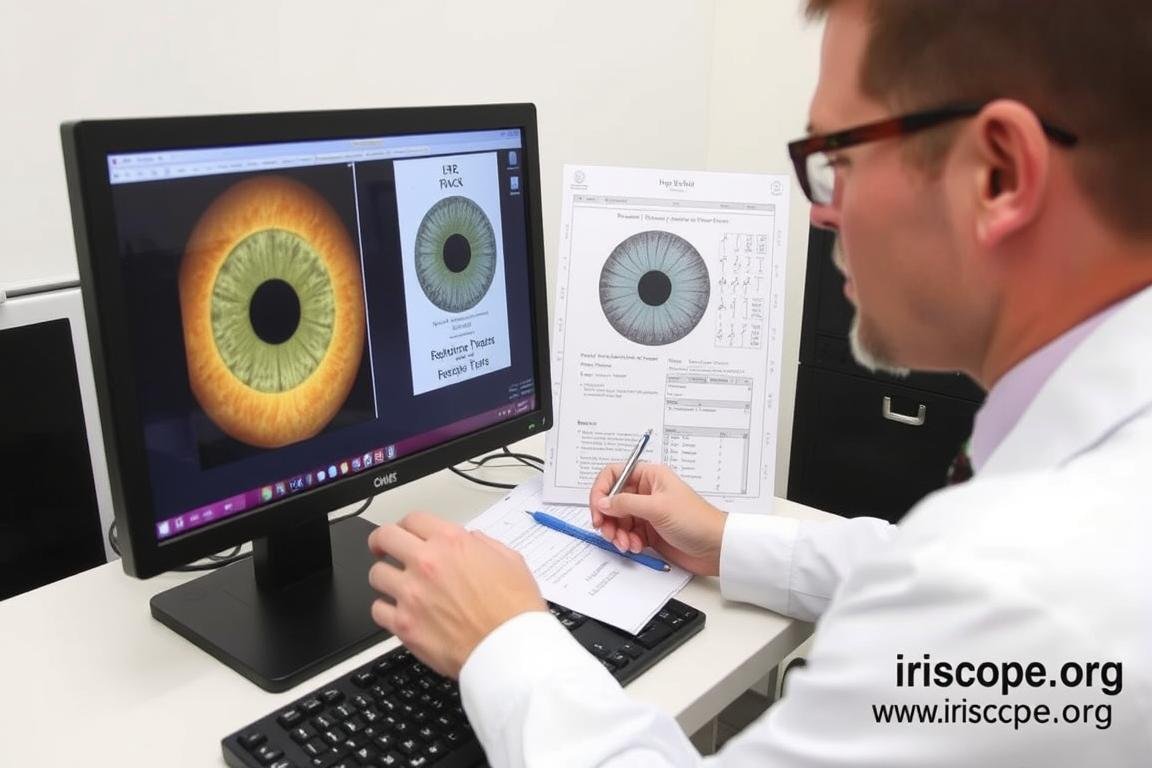
Examine the iris systematically, starting from the pupillary margin and working outward toward the limbus (outer edge). Note the color, structure, and any markings or discolorations in each zone according to your iridológia chart.
6. Documentation
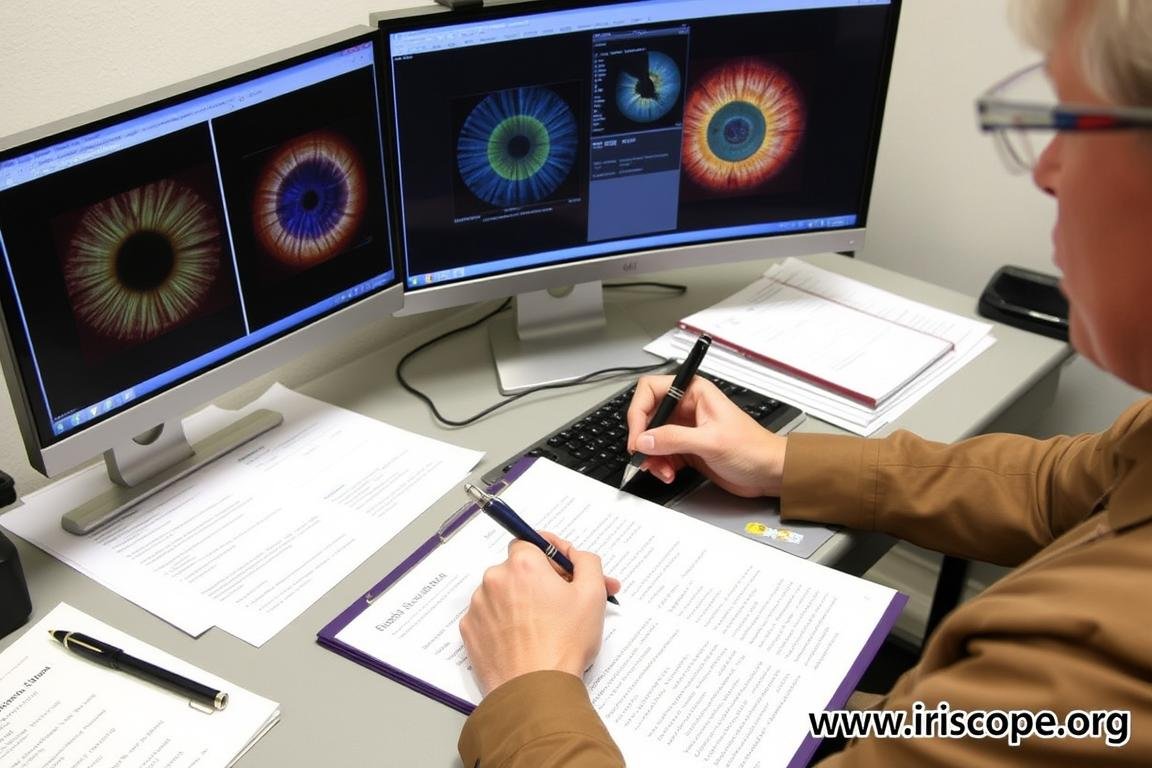
Record your observations in detail, noting the location, appearance, and potential significance of each finding. Use iridológia software if available to organize and store your analysis alongside the captured images.
Dôležité: Always maintain a professional approach during iridológia examinations. Explain to clients that iridológia is considered a complementary assessment tool and should not replace conventional medical diagnosis. Refer clients to appropriate healthcare providers if you observe signs that may indicate serious health concerns.
Common Iridológia Signs and Their Meanings
Interpreting iris signs requires knowledge of iridológia principles and careful observation. Below are some common iris features and their traditional interpretations in iridológia practice.
| Iris Sign |
Vzhľad |
Traditional Interpretation |
| Radiálne brázdy |
Linky vyžarujúce od žiaka do vonkajšej dúhovky |
May indicate digestive system conditions or nutritional absorption issues |
| Medzera |
Enclosed dark areas resembling lakes |
Often associated with potential organ weaknesses or lesions |
| Pigment |
Dark spots on the iris surface |
May indicate toxin accumulation or localized inflammation |
| Nervové krúžky |
Circular rings around the iris |
Often associated with nervous tension or stress responses |
| Lymfatický ruženec |
White dots forming a ring in the outer iris |
May indicate lymphatic system congestion |
| Lesk |
Dark ring around the outer edge of the iris |
Often associated with skin elimination issues |
Dúhovka
V iridológia, practitioners often classify irises into constitutional types based on their dominant features and colors. These classifications can provide insights into a person’s inherent strengths and potential vulnerabilities.
- Lymfatický typ: Blue iris with openings in the fibers, traditionally associated with sensitivity in the lymphatic and respiratory systems
- Hematogénny typ: Mixed blue/brown/yellow iris, often linked to circulatory and liver function
- Biliárny typ: Brown iris with dense fiber structure, traditionally associated with stronger digestive function
- Neural Type: Iris with many nerve rings, potentially indicating heightened nervous system sensitivity
Note on Interpretation: Iridológia interpretations vary among different schools of thought and practitioners. While some follow Bernard Jensen’s approach, others may use European or other systems. It’s important to study multiple perspectives and develop your understanding through continued education and practice.
Iridológia Software and Digital Analysis
Moderný iridológia practice is increasingly enhanced by specialized software that helps practitioners capture, store, analyze, and interpret iris images with greater precision and consistency.
Benefits of Digital Iridológia softvér
- Automated iris mapping and zone identification
- Enhanced visualization of subtle iris features
- Comparative analysis of images over time
- Comprehensive client records management
- Educational tools for client explanation
- Integration with other health assessment data
Key Features to Look for in Iridológia softvér
Image Enhancement
Quality software should offer tools to adjust brightness, contrast, and sharpness to highlight important iris features. Look for programs with filters that can isolate specific aspects of the iris structure for clearer analysis.
Mapping Capabilities
Effective iridológia software should overlay accurate iris charts onto captured images, helping to precisely identify which body systems correspond to observed iris signs. The best programs offer multiple chart systems.
Reporting Functions
Comprehensive reporting tools allow practitioners to generate professional assessments for clients. Look for software that can create customizable reports with images, annotations, and explanations of findings.
Professional Iridológia Software Solutions
Our advanced iridológia software integrates seamlessly with our iriscope equipment, providing comprehensive analysis tools, multiple chart systems, and professional reporting capabilities. Contact us to learn more about our software options and how they can enhance your practice.
Email for Software Information
Case Studies: Iridológia in Practice
Examining real-world applications of iridológia can provide valuable insights into how this practice is applied in clinical settings. The following case studies illustrate the process of using an iriscope for iridológia analysis and how practitioners interpret their findings.
Case Study 1: Nutritional Assessment
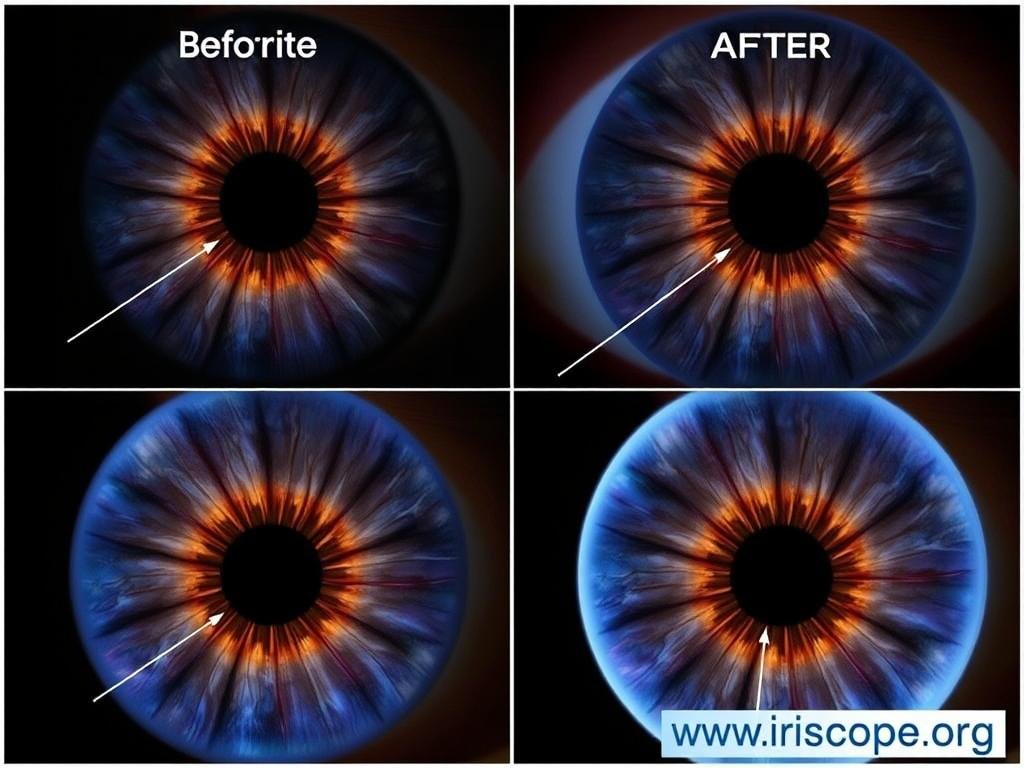
A 42-year-old client presented with concerns about chronic fatigue and digestive discomfort. Iridológia examination revealed pronounced radial furrows in the digestive zone of both irises, along with a lymphatic rosary pattern. The practitioner suggested potential nutritional deficiencies and recommended dietary modifications and specific supplements.
Follow-up examination three months later showed subtle improvements in the iris structure, correlating with the client’s reported increase in energy levels and reduced digestive symptoms. This case demonstrates how iridológia can be used as one component of a holistic nutritional assessment.
Case Study 2: Stress Patterns

A 35-year-old client with reported anxiety and sleep difficulties underwent an iridológia assessment. The examination revealed multiple pronounced nerve rings and a constricted pupil response. These findings aligned with the client’s reported high stress levels and nervous system activation.
The practitioner suggested stress management techniques and adaptogenic herbs as part of a comprehensive approach. This case illustrates how iridológia can provide visual confirmation of stress patterns that may benefit from holistic interventions.
Important Disclaimer: These case studies are provided for educational purposes only and represent the traditional iridológia perspective. Iridológia should be considered a complementary assessment tool rather than a diagnostic method. Always refer clients to appropriate healthcare providers for medical diagnosis and treatment.
Často kladené otázky o Iridológia and Iriscopes
What qualifications are needed to practice iridológia?
While requirements vary by country, most professional iridológia practitioners complete specialized training programs through iridológia schools or natural health institutes. These programs typically include study of iris anatomy, iridológia principles, chart systems, and clinical practice. Many practitioners also have backgrounds in other health fields such as naturopathy, nutrition, or traditional medicine. Continuing education is important to stay current with evolving practices in the field.
How much does a professional iriscope cost?
Iriscope prices vary widely based on features and capabilities. Basic models may start around 0-1,000, while advanced digital systems with integrated software can range from ,000 to ,000 or more. Factors affecting price include magnification power, image resolution, software capabilities, and build quality. Many practitioners consider it a worthwhile investment for their practice, as a quality iriscope can last many years with proper care.
Is iridológia scientifically proven?
Iridológia has limited support in conventional scientific literature. Some studies have questioned its diagnostic reliability, while others have shown potential correlations between iris signs and certain health conditions. The practice remains primarily in the realm of complementary and alternative medicine. Practitioners generally view iridológia as an assessment tool that can provide insights into constitutional tendencies rather than as a diagnostic method for specific diseases.
Can iridológia detect serious health conditions?
Tradičný iridológia theory suggests that iris signs may reflect constitutional weaknesses and functional changes in the body. However, iridológia should not be used to diagnose specific diseases or replace conventional medical testing. Responsible practitioners use iridológia as one component of a holistic health assessment and refer clients to appropriate healthcare providers when potentially serious conditions are suspected.
How often should iridológia examinations be performed?
For general health monitoring, many practitioners recommend annual iridológia examinations. For clients working through specific health challenges, follow-up examinations might be scheduled every 3-6 months to monitor potential changes. Unlike some iris features that reflect constitutional patterns and remain relatively stable, certain iris signs may show subtle changes over time, particularly in response to significant health interventions or lifestyle changes.
Advancing Your Iridológia Practice
The practice of iridológia offers a unique perspective on health assessment that many practitioners find valuable as part of a holistic approach. With proper training, quality equipment, and a commitment to ethical practice, iridológia can be a meaningful addition to your professional toolkit.
As you develop your skills in iridológia analysis, remember that the true value lies in the integration of this information with other health assessments and a comprehensive understanding of the individual’s overall health picture. The iriscope is a powerful tool, but its effectiveness ultimately depends on the knowledge, skill, and ethical approach of the practitioner using it.
We invite you to explore our range of professional iridológia equipment and resources to support your practice. Whether you’re just beginning your journey in iridológia or looking to upgrade your current equipment, our team is here to provide guidance and technical support.
Ready to Enhance Your Iridológia Practice?
Contact us today to discuss your equipment needs and discover how our professional iriscopes and iridológia resources can support your practice.
Get Started Today




























